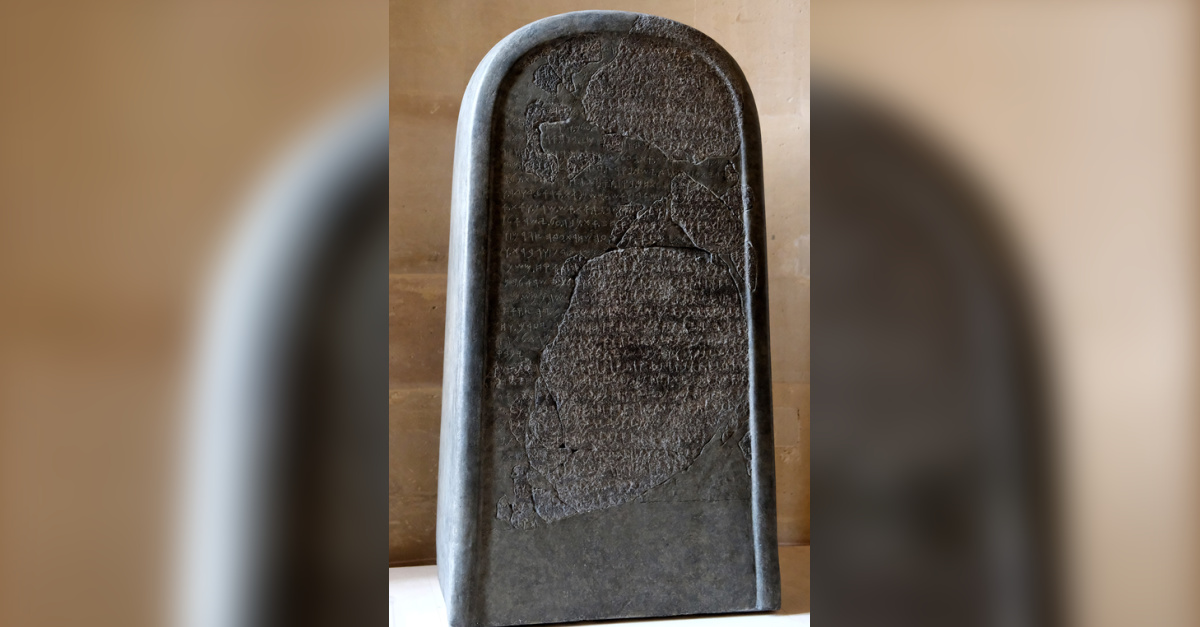
A 2,900-year-old basalt stone slab contains an extra-biblical reference to King David in support of him being an actual “historical figure,” according to scholars writing in the latest edition of the Biblical Archaeology Review.
The research involved an examination of the so-called Mesha Stele or Moabite Stone, which was discovered in 1868 before being damaged in 1869. Although the damage made certain parts of the tablet unreadable, a page squeeze (paper-mache impression) of the tablet was made before the damage, allowing the original words to be deciphered, according to the Biblical Archaeology Society.
The slab was dated to the ninth-century B.C. and chronicles the victories of King Mesha of Moab. It possibly references the events of 2 Kings 3, in which Moab goes to war against Israel and Judah.
Scholars André Lemaire and Jean-Philippe Delorme, writing in the Winter 2022 edition of the Biblical Archaeology Review, say new technology confirms that the Mesha Stele indeed references the “House of David.”
“In 2015, a team from the West Semitic Research Project of the University of Southern California took new digital photographs of both the restored stela and the paper squeeze,” they wrote. “The team used a method called Reflectance Transformation Imaging (RTI), in which numerous digital images are taken of an artifact from different angles and then combined to create a precise, three-dimensional digital rendering of the piece. This method is especially valuable because the digital rendering allows researchers to control the lighting of an inscribed artifact so that hidden, faint, or worn incisions become visible.
“In 2018, the Louvre Museum also took new, high-resolution backlit pictures of the squeeze, where the light was projected directly through the 150-year-old paper to provide a clearer view of the ancient letters it records,” they wrote.
The new technology allowed Lemaire and Delorme to decipher three letters in the phrase that were not previously legible.
“The stone contains a possible reference to the ‘House of David’ as Judah’s rulers, which seems to support King David as a historical figure,” a summary of the research says. “Thanks to recent photographic evidence, our authors argue that this reading can now be confirmed.”
Photo courtesy: ©The Louvre/Creative Commons, image cropped and resized
Michael Foust has covered the intersection of faith and news for 20 years. His stories have appeared in Baptist Press, Christianity Today, The Christian Post, the Leaf-Chronicle, the Toronto Star and the Knoxville News-Sentinel.
